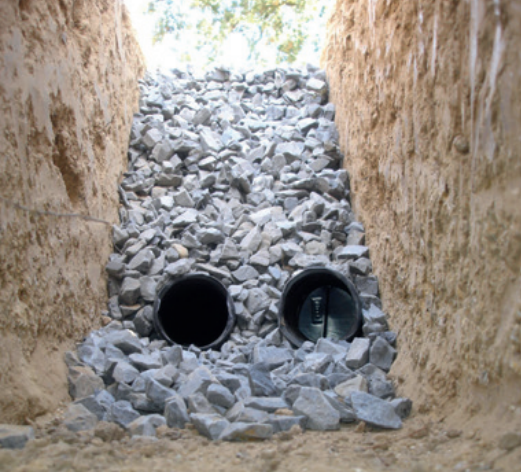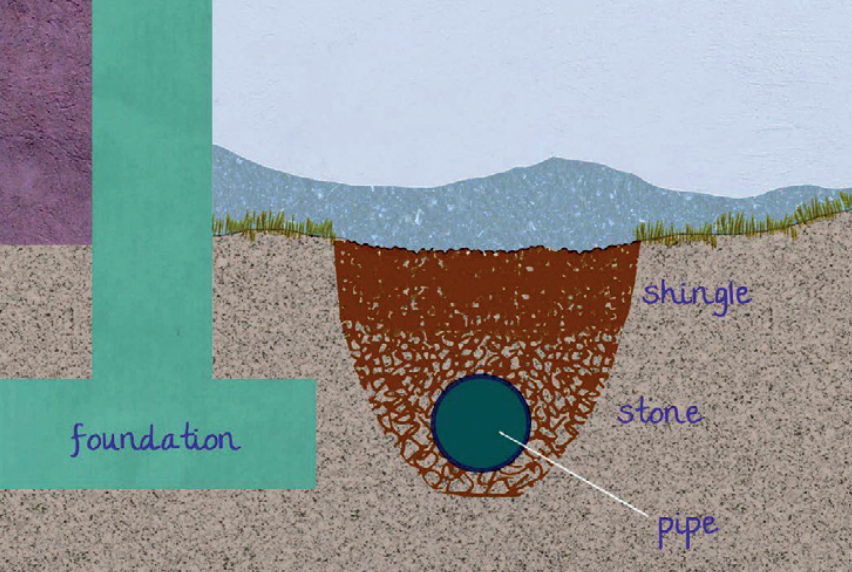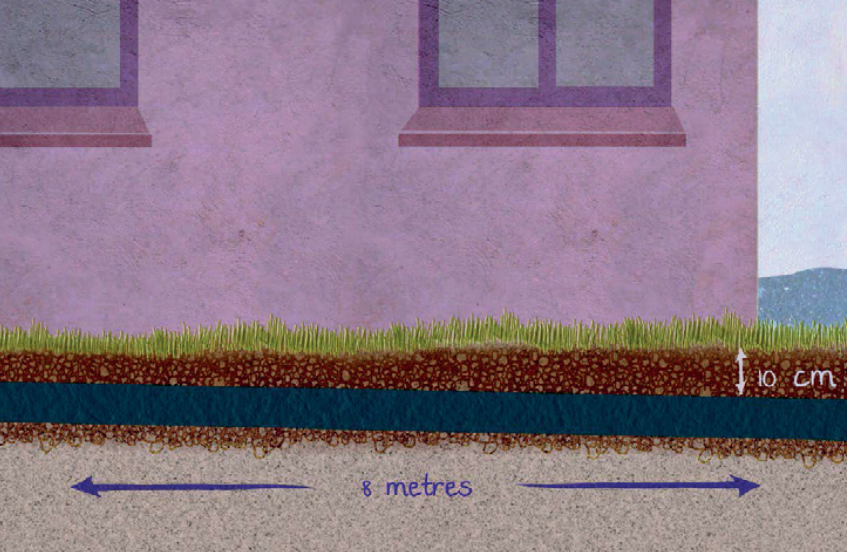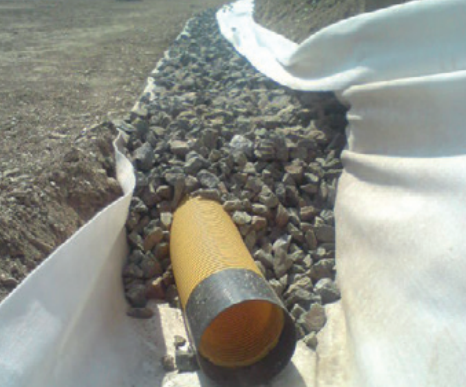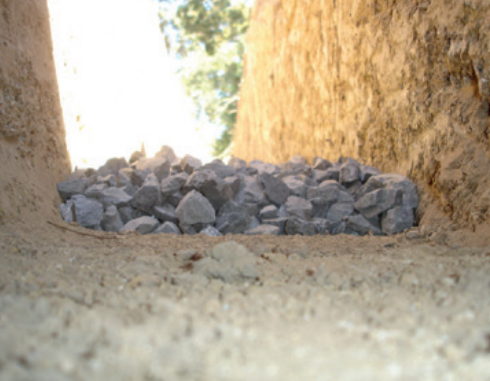How to build DIY French drains, arguably the simplest and possibly the oldest drainage system around.
In this article we cover:
- What is a French drain
- What are the main elements to build one
- Tips to build French drains: dos and don’ts
- Concepts to understand drainage
- Illustrations with depth and slope
Water is essentially lazy. While capable of capillary action, it will always choose to travel the path of least resistance. The key to ensuring water does not travel upward through your structure is to provide it with a more convenient path to take.
Damp proof coursing is currently used in brick and cement block buildings and damp proof membranes beneath our floors are the current methods for resisting rising moisture from the earth into our homes.
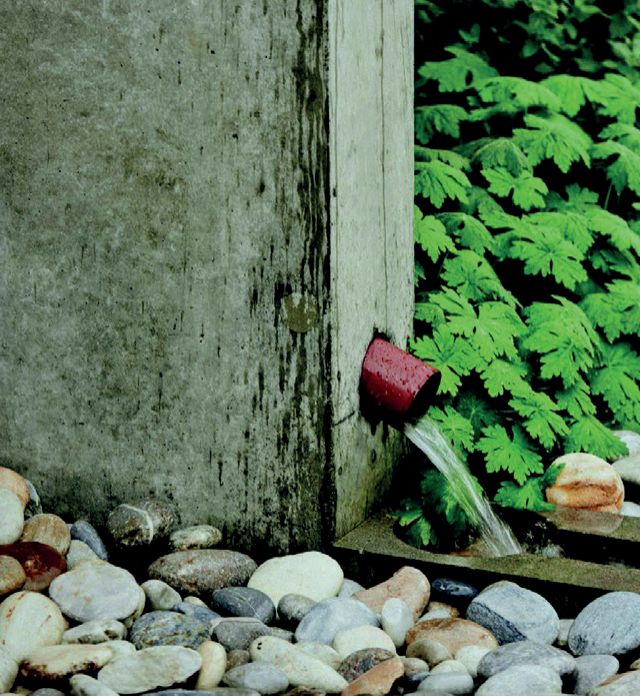
Rather than relying solely on such plastic and lead barriers beneath our structures, it is wise to use some low tech methods that work in harmony with the physics of water, rather than simply trying to block its path.
Creating an underground drainage system known as a French or footing drain allows us to work with nature and the natural path of water. These drains can be essential in maintaining dry foundations and therefore, dry walls and homes.
At its most basic it’s made by digging a downward sloping ditch, filling it with coarse draining rock. The slope was traditionally dug in the direction you wanted the water to travel and the drainage rock would allow the groundwater to move through it easily, and travel along the bottom of the drain.
The ditch was dug to the same depth as the building’s foundations so that any water that could be tempted to travel up through the foundations would instead take an easier path, travelling sideways into the drainage system and away from the structure.
Over the years a few simple innovations have improved the effectiveness and longevity of this drain type. Depending on your soil content you may choose to line the bottom of your drain with a plastic membrane, to encourage good water flow from the building.
This is not necessary if your soil has even a moderate amount of clay content as the clay will provide a smooth surface for the water to travel along. Just ensure you are precise with the installation of membranes within your drainage system as you do not want to block the path of water. It is important to always consider where your water is coming from, and where you want it to go.
Another useful addition to our modern French drain is perforated drainage pipe. Holes in the sidewall of the pipe allow the water in and it can then flow quickly and easily away from our structure, as opposed to having to navigate around the gravel the whole way along the drain.
Using correct size of drainage rock will ensure good percolation. If your gravel is too fine the water will have a hard time getting through it, and small gravel particles can block the holes in your drainage pipe. If the gravel is too large, soil and debris can get between the rocks and block the path of the water.
It is advisable to protect the top of your gravel with weed matting or cloth, which will allow water to go through it while preventing soil and grass roots from blocking your drainage system.
Adapted from Build Your Own: Use what you have to create what you need by Harrison Gardner.
Harrison also co-founded Our Common Knowledge, a non-profit social enterprise based in North Clare, ourcommonknowledge.org







